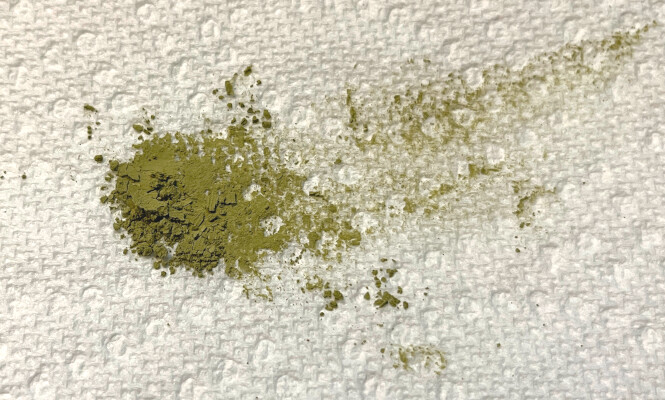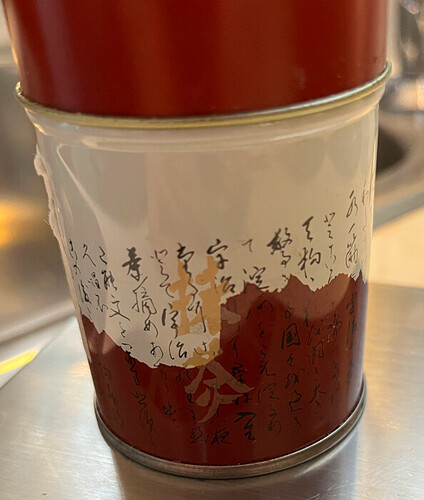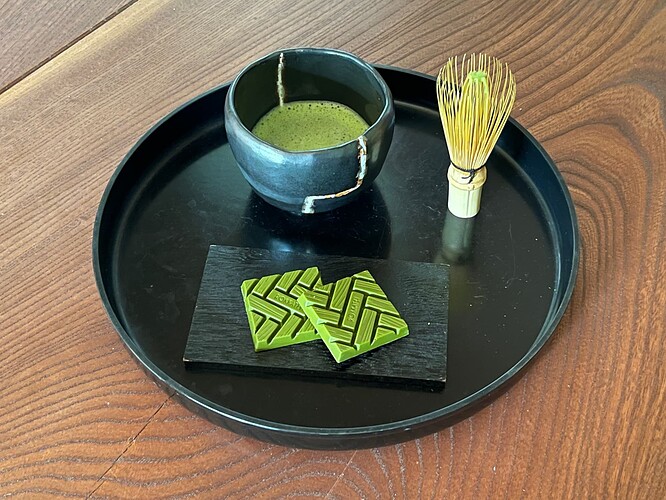Surely it can’t be that hard to grind your own with a household mortar and pestle.
I saw some people claiming that even a home-sized stone mill costs a fortune and that the amount of effort required to produce enough for even one dose is massive, but I have no idea what level they’re on.
tbh, this sounds right up your alley

It’s complicated. Yes, of course “ceremonial grade” is a Western invention because before matcha came to the west the descriptions were all in Japanese. In Japan there is a wide range of matcha grades, even among those offered by a single brand. For instance, one of Japan’s most famous bands, Koyamaen, makes some of Japan’s most delicious and priciest matcha, but also has about a dozen lesser grades, and many of them are described in Japanese as being for ceremonial use.
Likewise, many Western brands take liberty with the word ceremonial, packaging a lesser grade as something better. Ultimately, you need to let your taste buds be your guide, but generally, you get what you pay for. At the very least, if it’s cheap, it’s unlikely to be good.
As you point out, matcha is already finely ground, like espresso but even finer, so you absolutely want to take the upmost care in not exposing it to the elements. When I prepare matcha, I open my package, scoop what I need, then immediately seal it back up, so it’s only exposed for a few seconds at a time.
As for stone milling your own, simply put, it’s impractical. It’s not at all like hand-grinding your own coffee each morning. As others have noted, the process of stone-grinding matcha is laborious and time-intensive. It takes something like a couple hours to make just a few grams. Much of the reason why good matcha is so pricey.
I’ve toured matcha and green tea plantations and companies in Kyoto and Uji and have seen the process firsthand. Rooms full of automatic stone mills grinding away 24/7. It’s a sight to behold. There are home mills available, but milling your own is a novelty experience at best.
I was digging through boxes trying to find my chasen and chawan. No luck but I did manage to find this, which is at least four years old…
Of course I can’t read any of this and also have no idea what the quality level is, but I remember it was priced like ceremonial grade for 30g. Obviously it’s not good now, but I sealed the foil bag well with a tensioned clip so let’s see how it aged:

 Army
Army  Green
Green 
I suppose I could try it just to see how terrible it is. That’s not really my thing though and more of a James Hoffman video. I’m more interested in comparing one of these premium single cultivars with a normal, affordable matcha. So maybe I’ll do that. Only problem is shipping from Japan is tricky right now since e-packet is unavailable due to covid, so that sort of limits where I can buy from. DHL even for a small package and weight is $25.
Four years old? Throw that stuff out ASAP.
You gotta drink it for science.
That took me down a rabbit hole. Theres so many videos like this out there. Actually super interesting
Yea his YouTube channel is fascinating.
I’ve been crushing this Yemen mokka brew by going back to my default method of low agitation (no swirling, stirring, or aggro pouring) while also monitoring slurry temps as I pour. I had gotten away from this for whatever reason but was inspired to revisit it after reading the most recent CAA blog entry which I’ll link below.
You’ll need a fairly quick and accurate thermocouple to do this. I’m using a Thermapen in my left hand to monitor the slurry while pouring with my right hand, and targeting 190 F (88 C) with roughly a +/- 3 F temp swing range (kettle water temp between 200 F and 205 F), which was determined entirely through trial and error. If you’ve never brewed this way, what you’ll quickly realize is that the temperature roll-off is nonlinear and requires some anticipation, timing, and flow control, and that any method of pouring you’ve used that doesn’t involve active monitoring is going to be subject to much larger variations in slurry temperature.
My first puzzling observation was that a long steep prepared in a Trinity One dripper could taste perfectly fine if I sampled it from the top after ten minutes, but astringent after it had gently flowed out from the bottom after opening the flow valve.
When I told this to Samo, he did not appear to be surprised at all, and he told me about colleagues that had recently likely discovered what chemical is responsible for astringency in coffee.
And that was exactly what Samo was getting at: this compound, as others do, has a solubility curve that depends very strongly on the water temperature, in a way that is not at all linear.
The case of astringent compounds is particularly interesting, because they require a very high temperature to be dissolved efficiently in water. This is a really good thing for us, because if they were to dissolve in water, they would pass right through the coffee bed, as all the other tasty compounds do, and it would be almost impossible to avoid astringency.
For Vario / Forte people: If you don’t already have the single dose hopper, it’s a must-buy imo. Forgot to mention I got one a few months ago when the black one was restocked and I swear my grind quality improved, probably due to the little cap inside preventing popcorning which I didn’t have in my DIY solution. It seems ridiculous at $24 but it’s worth every penny. Also eliminated the need for knocking / bellowing / canned air to get everything through.
Can confirm, I bought one the first time you recommended it. “Single dose” isn’t exactly right as it can comfortably do at least 90g but it’s also fine for actual single doses. I can’t imagine ever putting the original hopper back on.
Same, it’s definitely worth it. The only issue I have with it is that trying to use the cap as a bellows to force all the grinds out is somewhat cumbersome. I’ve seen some bellows cap replacements on Etsy but haven’t pulled the trigger.
I’m getting super low retention with almost nothing to blow out. Did you do the flapper mod?
No, I keep meaning to but haven’t gotten around to it
Is that a matcha chocolate? That wagashi you posted that looks like a minuature peach or whatever is super dope. I should learn how to make those.




